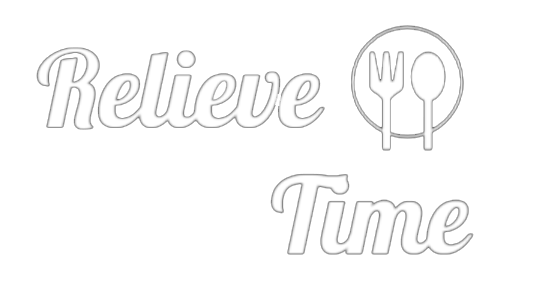5 Alternatives to Sassicaia, Tuscany’s Legendary Red Blend
Known as the original “Super Tuscan” and kick-starting the Bordeaux-variety revolution in Italy in the 1970s, Sassicaia continues to be one of the most highly sought-after wines in its category.
Sassicaia comes from Bolgheri, a small area on Italy’s Etruscan Coast that was often overlooked when compared to nearby powerhouses like Chianti Classico and Brunello di Montalcino. Unlike these other areas, which are known for crafting wines from the local Sangiovese grape, Bolgheri was planted to international varieties, primarily grapes found in Bordeaux like Cabernet Sauvignon, Merlot, Cabernet Franc, and Petit Verdot.
The Cabernet-based wine from Tenuta San Guido was originally reserved for family and friends, but in 1968, the winery harvested the first commercial vintage of Sassicaia, which was later released in 1971. The blend was met with a lot of backlash from wine professionals who disagreed with the use of international grapes in such a rich, cultural center of Italian wine, but the wine’s compelling taste catapulted it to fame despite this opposition. The Sassicaia brand specifically made a splash in 1978 when Decanter Magazine arranged a blind tasting of Cabernet-based wines, and when pitted against top bottles of Bordeaux, Sassicaia came out on top. In the years following, the wine continued to receive high scores from reviewers: Robert Parker awarded the 1985 vintage 100 points, solidifying its status as a cult wine.
The wine reached new levels of fame when it became popular among legendary NBA players, with LeBron James frequently posting back-vintage bottles of Sassicaia and calling it out as one of his all-time favorites.
With this status, of course, comes a hefty price tag, with current vintages hovering around $300 per bottle upon release. Other well-known Super Tuscans, including labels like Antinori’s Tignanello and Ornellaia, also fetch sky-high prices. For those looking to try a Super Tuscan wine at a more accessible price point, here are six alternatives to Sassicaia.
Tenuta San Guido Guidalberto
The second label Bordeaux blend from Tenuta San Guido, this bottle comes from the same estate as Sassicaia. But rather than dropping $300 on a bottle, the Guidalberto comes in at a much more reasonable $75. The wine first debuted in 2000, and similarly comes from Tuscany’s Bolgheri area. It’s a blend of Cabernet Sauvignon and Merlot that is meant to be rich and aromatic with a soft, approachable palate. So while it might not be as intense or age-worthy as Sassicaia, drinkers can get a similar experience from a prestigious brand at a fraction of the cost.
Grattamacco Bolgheri Rosso Superiore
Grattamacco was founded in 1977, and the estate’s flagship bottle, the Bolgheri Rosso Superiore, is widely considered to be the second important bottling released from this region after Sassicaia. The Grattamacco vineyards are located at about 330 feet above sea level in the hills of the Etruscan Coast, lending to elegant, structured wines. This bottling is made with 65 percent Cabernet Sauvignon, 20 percent Merlot, and 15 percent Sangiovese. The percentage of Sangiovese here is higher than in many other Super Tuscan blends, adding red fruit notes and bright acidity to the overall wine. This bottle can be found for around $100 for the current vintage.
Le Macchiole Bolgheri Rosso
Founded in the early 1980s, Le Macchiole is another historic estate located in Bolgheri. The winery’s Bolgheri Rosso bottling was first introduced in 2004, and still represents a great value for the region today. It’s a blend of Merlot, Cabernet Franc, Cabernet Sauvignon, and Syrah that offers plush flavors of vanilla, tobacco, blackberries, and plums. The wine is relatively easy to find and comes in at just around $40.
Isole e Olena Cabernet Sauvignon
Unlike the previous estates on this list, Isole e Olena is rooted in the heart of Chianti Classico, where Sangiovese reigns supreme. The winery is known for its Sangiovese-based wines (which we love), but Isole e Olena does make a varietal Cabernet Sauvignon from the sunny hills of Tuscany. It offers the powerful profile that Cabernet Sauvignon drinkers crave, while still delivering the refreshing acidity and complex spice notes that the Chianti area is renowned for. Though not a total steal, this wine can typically be found for around $100.
Mastrojanni San Pio Rosso
Based in the historic village of Montalcino, Mastrojanni is primarily known for its Brunello di Montalcino. But the winery also makes the San Pio bottling, a blend of Cabernet Sauvignon and Sangiovese, to appeal to the Super Tuscan fans out there. For this wine, the Cabernet Sauvignon is aged for 18 months in barrels while the Sangiovese is aged in concrete vats. Expect notes of black cherry, chocolate, pepper, and hints of earth, all for about $35.
The article 5 Alternatives to Sassicaia, Tuscany’s Legendary Red Blend appeared first on VinePair.
